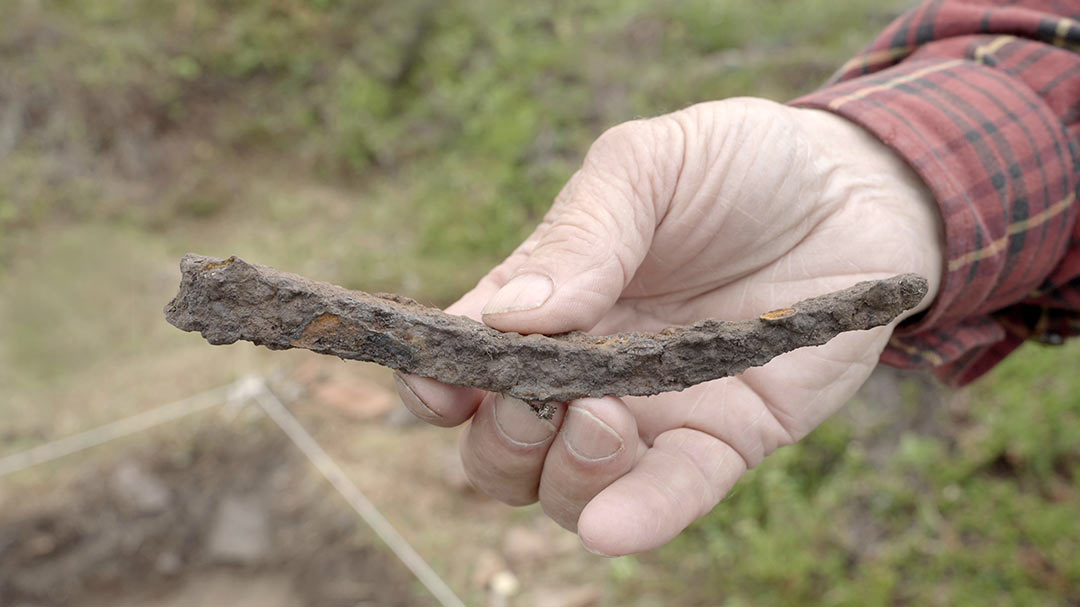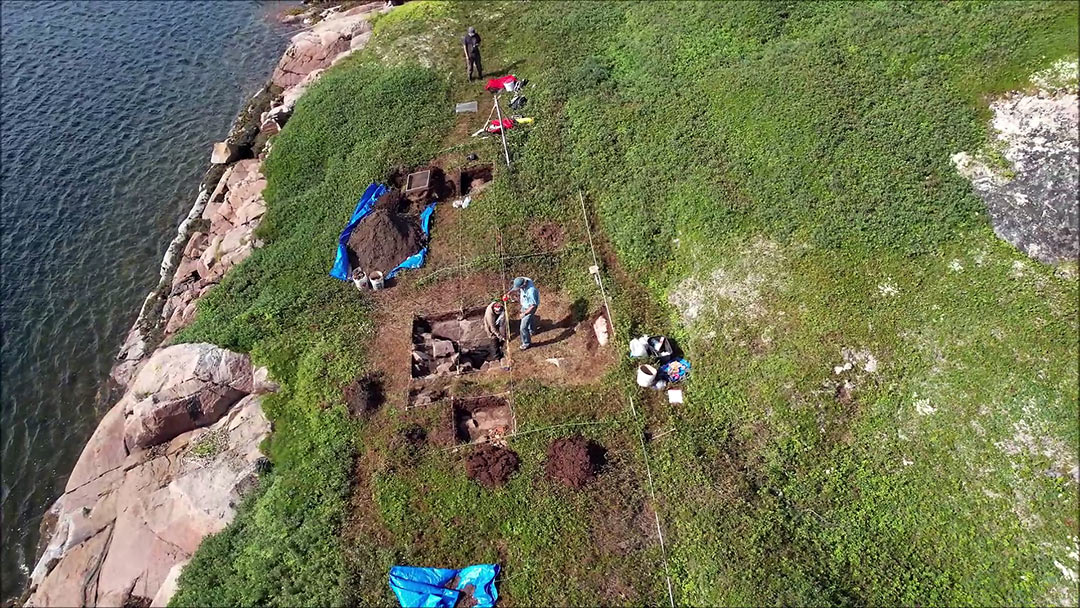
In the early sixteenth century, Basque ships sailed from the Bay of Biscay across the North Atlantic to the Labrador coast and the Strait of Belle Isle, which the Basques called Gran Baya (Grand Bay). Every year, between fifteen and twenty Basque crews fished cod and, more importantly, harpooned bowhead whales and right whales. Shore workers built open-air sheds with tryworks, where they rendered the whale blubber into oil. They also built cooperages, where they made the barrels necessary for transporting the oil. They established contact with Indigenous groups in the Strait of Belle Isle and laid the foundations of the fur trade.
Within a hundred years or so, the whale population had declined because of the intensive hunts. Competition from other countries had increased, New France had grown stronger, and Inuit trading partners had become hostile. The Basques ended their activities in the region, and their once dominant presence there was largely forgotten.
In the 1970s, archaeologist Selma Barkham discovered thousands of whaling-related documents gathering dust in archives in the Basque country. Her research stimulated interest in the Basque whaling era in the New World and led to excavations at Red Bay, Labrador, where the remains of large-scale whaling operations were found.
Barkham also located period manuscripts that pinpointed Blanc Sablon as a former Basque whaling port. In the intervening years, professional and amateur researchers have unearthed characteristic red roof tiles and other artifacts of Basque origin on the Lower North Shore that indicate the historical existence of whaling installations in Middle Bay and a fishing station in Havre Hare (now Havre aux Lièvres), Petit Mécatina.
In August 2022, William Fitzhugh, director of the Smithsonian Arctic Studies Center, and his assistants, Francisco Rivera and Sarai Barreiro Argüelles, discovered evidence of small Basque tryworks on the island of Bonne Espérance off the shore of St. Paul's River. These remains—huge slabs of baleen, barrel staves, a headless iron spike, and Basque ceramics—may date from the mid-sixteenth century or earlier when very large bowhead whales were still prevalent in the Northern Gulf of St. Lawrence. “It may have been a Basque whaling operation that hadn't yet taken the full industrial form seen at Red Bay,” William Fitzhugh points out.
“Bowheads have thick blubber—up to eight inches thick. They're associated with ice, and this was the Little Ice Age. It suggests that Arctic conditions extended much farther south than today and included the Gulf of St. Lawrence, which in recent years has hardly had any ice at all.

“We also dug a couple of test pits north of the baleen pit. We were able to confirm that there was cultural material there and that it may have been a domestic area or habitation area. People may have been living ashore.
“There's a lot we don't know at this point. But it's all very interesting in terms of the site's potential for future excavation and research.”
